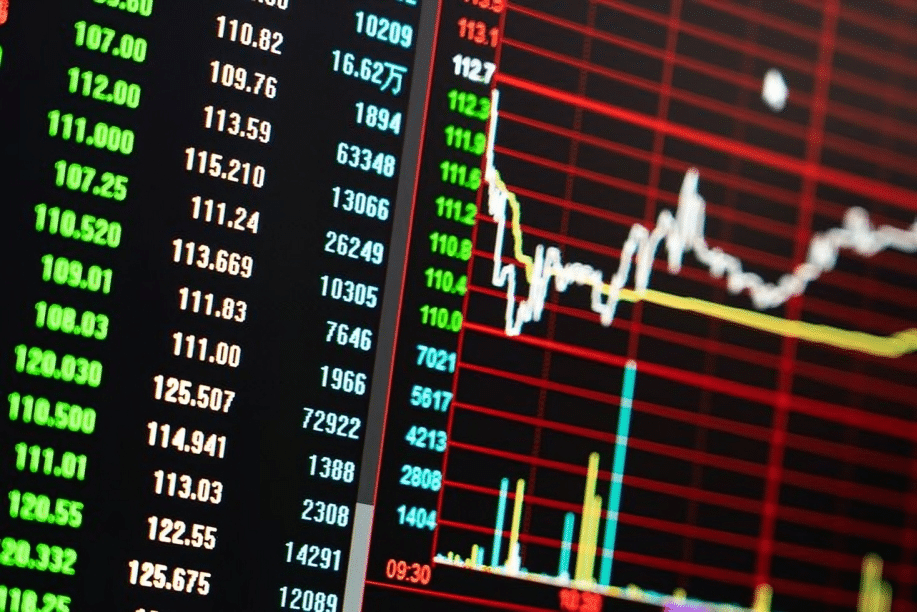Key Factors to Consider Before the Stock Market Opens
Before the stock market opens each day, there are key factors to consider that can help you make informed investment decisions. Understanding these elements can enhance your trading strategies and set the right tone for the day. Here are some essential points to keep in mind:
Economic Indicators
- Gross Domestic Product (GDP): Growth in GDP suggests economic strength, which can lead to higher stock prices.
- Unemployment Rate: A low unemployment rate generally indicates a strong economy and positive investor sentiment.
- Consumer Confidence Index: Reflects consumer optimism, which influences spending and investment behavior.
- Inflation Rates: High inflation may result in higher interest rates and negatively affect stock performance.
Pre-Market Trading Activity
- Top Gainers and Losers: Identifying stocks that are rising or falling significantly can highlight opportunities.
- News-Related Movements: Look for earnings announcements, merger news, or regulatory changes that may move stocks before the opening bell.
- Market Sentiment: Pre-market trends — bullish or bearish — can help determine how to position trades.
Global Market Influences
- Foreign Market Performance: Major moves in Europe or Asia can influence U.S. markets at the open.
- Geopolitical Events: Elections, conflicts, or trade negotiations can impact investor confidence worldwide.
- Currency Exchange Rates: Currency strength can affect multinational companies and export-oriented businesses.
Corporate Earnings Reports
- Expectations vs. Actual Earnings: Whether companies meet, exceed, or fall short of estimates can influence stock performance.
- Forward Guidance: Company projections for future earnings can drive investor confidence.
- Sector Performance: Strength in specific sectors may indicate broader market momentum.
Technical Analysis
- Support and Resistance Levels: Knowing these levels helps in determining entry and exit points.
- Moving Averages: Useful for identifying trends and potential reversals.
- Volume Trends: Higher volume can confirm price movements and trends.
By keeping these five factors in mind, you can better prepare yourself before the stock market opens each day. Whether you’re a seasoned investor or a newcomer, understanding these market dynamics will sharpen your trading strategy and improve your chances of success.
Strategies for Successful Trading in the Pre-Market Session
The pre-market session is a crucial time for traders looking to make strategic moves before the stock market opens. Understanding how to navigate this period can significantly impact your trading success. Here are key strategies to help you succeed during pre-market trading hours.
Understanding Pre-Market Trading Hours
The pre-market session occurs before the official market opens — typically from 4:00 AM to 9:30 AM EST. Not all brokers offer pre-market trading, so it’s important to verify your broker’s policies. This window allows traders to react to news, earnings reports, and other significant events before regular trading begins.
Conduct Thorough Research
- Earnings Reports: Many companies release earnings results before the market opens, which can drive large price movements.
- Economic Indicators: Scheduled data releases, such as unemployment rates or GDP growth, can influence market sentiment.
- Political News: Unexpected developments in policy or global affairs can impact price direction.
Utilize Pre-Market Indicators
- Volume: Look for stocks with higher-than-normal trading volume, which can indicate strong interest and volatility.
- Price Trends: Monitor whether a stock is moving up or down to gauge potential opportunities.
Use Limit Orders
Limit orders allow you to specify the price at which you are willing to buy or sell a stock. In pre-market trading, where prices can fluctuate more rapidly, limit orders help you control execution and avoid unfavorable trades.
Be Cautious with Volatility
- Set Stop-Loss Orders: Consider the maximum loss you’re willing to tolerate and set stop-loss orders accordingly.
- Trade Small Positions: Start with smaller trades to manage risk and adjust your strategy as you gain experience.
Pay Attention to Market Reactions
Once the regular session begins, closely monitor how the market reacts. Stocks can behave differently after the open, and being alert will help you adjust your positions quickly if needed.
Join Trading Communities
Engaging with other traders can help you gather new insights and stay aware of market sentiment. Online forums and social platforms can be useful resources for sharing ideas and strategies.
Conclusion
Understanding the market landscape before it opens can significantly enhance your trading success. By considering economic indicators, global news, pre-market activity, and corporate earnings, you’ll enter each day with more confidence and preparedness.
During the pre-market session, using thoughtful strategies — such as limit orders, research-based decisions, and risk management — gives you a strong foundation for trading success. Remember that informed decision-making, continuous learning, and adaptability are key to thriving in the market. With the right mindset and preparation, you’ll be better positioned to turn opportunities into successful trades as the market opens.
Comparison, examination, and analysis between investment houses
Leave your details, and an expert from our team will get back to you as soon as possible
* This article, in whole or in part, does not contain any promise of investment returns, nor does it constitute professional advice to make investments in any particular field.
To read more about the full disclaimer, click here- Ronny Mor
- •
- 16 Min Read
- •
- ago 3 minutes
 Best Buy Marketplace launches, offering dishes, instruments, toys, and more
Best Buy Marketplace launches, offering dishes, instruments, toys, and more
Exploring the exciting offerings of the Best Buy Marketplace launch: dishes, instruments, toys, and more In an exciting move, Best
- ago 3 minutes
- •
- 16 Min Read
Exploring the exciting offerings of the Best Buy Marketplace launch: dishes, instruments, toys, and more In an exciting move, Best
- sagi habasov
- •
- 17 Min Read
- •
- ago 1 hour
 US Oil and Gas M&A Activity Tripled Last Year, Report Says
US Oil and Gas M&A Activity Tripled Last Year, Report Says
Analysis of Trends in US Oil and Gas M&A Activity Tripling Last Year In the past year, the landscape of
- ago 1 hour
- •
- 17 Min Read
Analysis of Trends in US Oil and Gas M&A Activity Tripling Last Year In the past year, the landscape of
- orshu
- •
- 14 Min Read
- •
- ago 2 hours
 The U.S. Housing Market Cools: Typical Home Sold in July Spent 43 Days on the Market – the Longest Since 2015
The U.S. Housing Market Cools: Typical Home Sold in July Spent 43 Days on the Market – the Longest Since 2015
The U.S. housing market, long characterized by surging demand, tight supply, and rapid turnover, is showing signs of cooling. According
- ago 2 hours
- •
- 14 Min Read
The U.S. housing market, long characterized by surging demand, tight supply, and rapid turnover, is showing signs of cooling. According
- Lior mor
- •
- 14 Min Read
- •
- ago 2 hours
 Nvidia Develops New AI Chip for China: The Strategic Stakes Behind the B30A
Nvidia Develops New AI Chip for China: The Strategic Stakes Behind the B30A
Nvidia, the world’s most valuable semiconductor company, is reportedly developing a new AI chip for the Chinese market that will
- ago 2 hours
- •
- 14 Min Read
Nvidia, the world’s most valuable semiconductor company, is reportedly developing a new AI chip for the Chinese market that will












